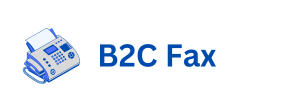Successful digital marketing requires tracking the most important marketing metrics.
Conversion rate is one of the most important numbers to track, but most businesses forget that tracking conversion rates isn’t enough. You need to set up conversion rate tracking and then consistently optimize your rate across all channels.
Let’s review :
What do the acronyms linked to the conversion rate mean?
Why they are relevant to your business
Good conversion rates from different companies
How to calculate conversion rate
Help to control and improve it
Once you understand how conversion rate and conversion tracking work, gambling data turkey you’ll be able to:
Create more effective marketing campaigns
Track your campaign performance
Minimize advertising investment
Maximize your sales
Increase the number of conversions in general
Let’s go!
Demystifying the most used acronyms
Here is a quick overview of the most commonly used acronyms related to conversion rates. After the list, I will provide you with some examples of them to deepen your understanding. There is a separate section dedicated to conversion rates and optimizing them.
Let’s quickly go over some other relevant terms as well, so you understand what they mean and improve your conversion rate in the future.
Explanation of acronyms
Acronym Means He tells you How to calculate
CR Conversion Rate How many people have acted after viewing your ad Actions/interactions with the ad
CVR Conversion Rate How many people have acted after viewing your ad Actions/interactions with the ad
CRO Conversion Rate Optimization It refers to the process of increasing your conversion rate on your website or application. –
CTR Click Rate How many times someone clicked on your ad versus how many people saw it Clicks/impressions
CPL Cost Per Potential Client or Lead Measure the profitability of your marketing campaigns. Marketing spend / total number of new leads
CPC (or PPC) Cost Per Click (Pay Per Click) Determines the costs of displaying users’ ads on search engines Total advertising investment / number of clicks
SEM Search Engine Marketing Companies pay to have their ads appear in search results –
ROI Return on Investment How profitable are your investments? Total profit – marketing costs / marketing costs x 100%
KPI Key Performance Indicator How well you do in a specific department/task –
SEO Search Engine Optimization SEO aims to make more potential customers find you through the use of search engines. –
Click-Through Rate (CTR)
CTR can be used to determine the performance of keywords and ads. It is calculated by taking the number of clicks a specific link has and dividing it by the number of people who viewed it.
CTR click-through rate
Used to measure online advertising campaigns and the effectiveness of email campaigns.
For example, if you have 60 clicks on one of your banner ads and 10,000 people have seen it, understanding telegram’s group size limits and features your CTR would be:
60/10,000 x 100% = 0.06%
CTR is a simple-to-use metric to track how many people you’ve driven to your website. Everything that happens (or doesn’t happen) once people reach your website is related to conversions.
Cost Per Potential Client or Lead (CPL)
Measure the profitability of your marketing campaigns.
The Wikipedia definition of CPL is: “CPL is an online advertising pricing model, where the advertiser pays for an explicit subscription from a consumer interested in the advertiser’s offering.”
To put it simply, b2c fax CPL refers to the amount you have to spend to get a single lead. CPL doesn’t take into account how many clicks your ad has had, but rather focuses on how many people convert, for example by leaving their email address in a form.


